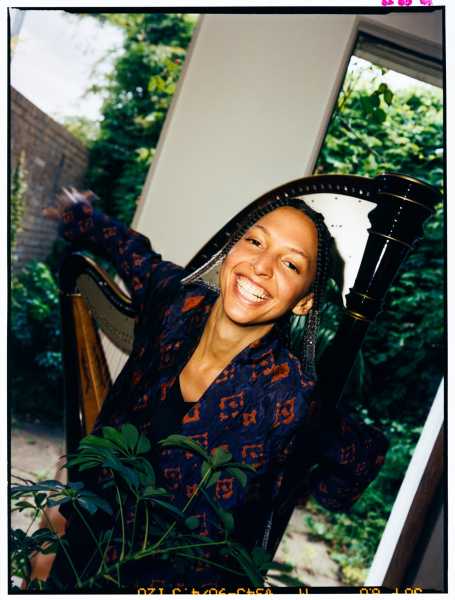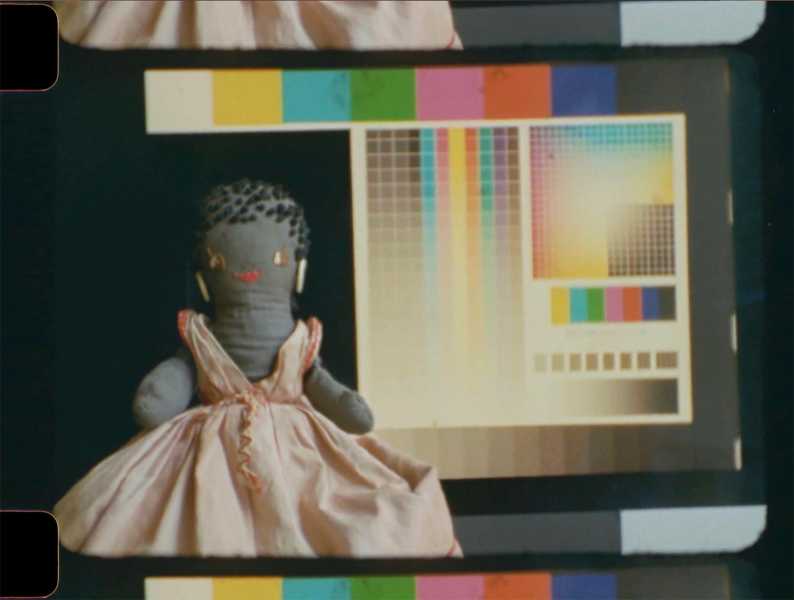
Save this storySave this storySave this storySave this story
Hilton Als
Staff writer
You’re reading the Goings On newsletter, a guide to what we’re watching, listening to, and doing this week. Sign up to receive it in your in-box.
The poignancy at the heart of “David’s Friend”—Nora Burns’s compassionate, more or less one-woman show about her best friend David, whom she met as a teen-ager and who succumbed to AIDS at the age of thirty-one, in 1993—is a question: How do we survive immeasurable loss? The play, directed by David Pivirotto, is set primarily in late-seventies and early-eighties Boston and New York, amid the cities’ club cultures. With the help of the d.j. and occasional narrator Ricky Roman, it evokes a swirling world characterized by physical freedom and sexuality—a defiantly queer world where a straight cis woman could find herself, and a romantic friendship in the bargain. An indefatigable fan of gay culture and the men who make it, Burns, who plays her younger self more tongue in cheek than not, describes how she supported herself during her college years, dancing at bygone strip joints and delivering naughty telegrams while David tricked, and landed wherever. By the end of this ultimately tender hour-long piece, you’ll miss David, too.

Illustration by Jasjyot Singh Hans
Burns explores this same realm which she found so welcoming in a second brief piece, running in repertory at the SoHo Playhouse with “David’s Friend,” through Aug. 10: “The Village! A Disco Daydream,” set in 1979 New York City, in which a college student enters the world of drinking, drugs, and dancing. For years, Burns’s metier has been sketch comedy. As part of the comedy trio Unitard, which features the wonderful writers and performers Mike Albo and David Ilku, Burns has her comedic skills supplemented by good, fast-paced writing. But in these evocative pieces, by slowing things down a bit, she draws our attention to what she hears, as an ever-developing playwright.

About Town
Dance
More than fifty years old and long without its founding members, Pilobolus has been a shadow of itself for many years. The gymnastic skill remains high, but the strange poetry is in short supply, too often replaced with cuteness. To the Joyce, the company brings two local premières: “Bloodlines,” a symbiotic, weight-sharing female duet, and “Tales from the Underworld,” a comic-horror piece with music by Stuart Bogie. These are split between two programs, the second of which looks to be the better bet, as it includes the company classic “Untitled” (1975) and the impressive human shadow puppetry of “Behind the Shadows.”—Brian Seibert (Joyce Theatre; July 23-Aug. 11.)
Folk
In an old Reddit Q. & A., the singer Jessica Pratt—forever being told that she “spoke strangely”—puzzled over her apparent mysteriousness. It’s true that Pratt’s haunting voice and inscrutable accent make her hard to map. In fact, she’s from California, an origin less disguised on her latest album, “Here in the Pitch.” On earlier records, Pratt gravitated toward a soft folk-Americana sound, sometimes labelled freak-folk. On her percussive new release, Pratt lives in the borderlands between genres and personas. The music is as much blues, even bossa-nova, as it is folk, and Pratt is as much L.A. noir ingénue as psychedelic oracle. As always, her betweenness is her allure.—Leo Lasdun (Bowery Ballroom; July 24-25.)
Experimental Jazz

Photograph by Tofjan
As a teen, the Caribbean Belgian ambient musician Nala Sinephro joined the jazz department at an arts high school and discovered the harp. After a year at the Berklee College of Music, she transitioned into sound engineering. She started and quit a second jazz college in London, pronouncing its lack of racial diversity stifling, before finally identifying her creative community in the Steam Down collective, which promotes spontaneous sound, and includes the multi-instrumentalist Shabaka and the saxophonist Nubya Garcia. Sinephro took its lessons to heart on her début record, “Space 1.8” (2021), a minimalist marvel made with pedal harp and modular synths and composed alongside friends like Garcia—its subtle, rich atmospherics closing the loop on years of formal and independent study.—Sheldon Pearce (St. Ann & the Holy Trinity; July 27.)
Opera
Love, betrayal, religion, murder, innkeepers—what more could one want in an opera? This year, Bard SummerScape honors the German composer Giacomo Meyerbeer with a run of the gripping but seldom staged “Le Prophète.” Meyerbeer’s presence, once one of the most visible in the nineteenth-century opera scene, dimmed over time, aided by the Nazi suppression of Jewish works and, to no one’s surprise, prejudiced critiques from Wagner. Directed here by the Hamburg native Christian Räth and performed in French, with English supertitles, “Le Prophète” is a historical yet eternal meditation on the role of fanaticism in the quest for political power.—Jane Bua (Fisher Center at Bard, Annandale-on-Hudson, N.Y.; July 26-Aug. 4.)
Art

A still from “Trompe l’Oeil: Black Leader” (2023).
Art work by Ina Archer / Courtesy the artist / Microscope Gallery
The terrific show “Ina Archer: To Deceive the Eye” is rough and imperfect, but so filled with verve, imagination, and singularity of vision that to spend time in it is to thrill to a young artist whose roughness is part of her strength. There are drawings, some featuring minstrel figures and done in a style that can recall Andrew LaMar Hopkins and Kara Walker, but it’s Archer's manipulated videos of Depression-era musicals featuring Black women in which you feel her eye and mind really take off. It’s wonderful to watch her discover what those dancing and singing figures mean to her in her piece “Black Black Moonlight: A Minstrel Show,” and how they play when juxtaposed with the famous James Baldwin and William F. Buckley Cambridge Union debate, from 1965. In Archer’s short 16-mm. film “Trompe l’Oeil: Black Leader,” you see the full seriousness of her view of what the moving image can do, should do.—Hilton Als (Microscope Gallery; through July 27.)
Movies
A highlight of the series “Spectacle Every Day: Mexican Popular Cinema” is the director Julio Bracho’s “Take Me In Your Arms” (1954), which turns a passionate melodrama of thwarted romance into a scathing critique of inequality, corruption, and machismo. Rita (Ninón Sevilla), a poor fisherman’s daughter, plans to marry a union leader, but she is forced to work for a rich man in order to pay off her father’s debts. With her dreams shattered, she becomes her boss’s mistress in cynical pursuit of wealth and even fame, while getting an eyeful of the dirty deals on which the entire social order depends. Sevilla’s fervent and steely performance (complete with singing and dancing in musical interludes) is matched by the lurid intensity of the cinematography, from rapturous closeups to distorted imaginings.—Richard Brody (Film at Lincoln Center; the series runs July 26-Aug. 8.)

Pick Three
The staff writer Molly Fischer shares great books for new parents.
1. “The Cazalet Chronicles,” by Elizabeth Jane Howard, is a five-book saga about an upper-middle-class British family around the Second World War. It’s Hilary Mantel-approved historical fiction—and it’s also totally comprehensible and compelling to a reader temporarily incapable of distinguishing among the Thomases who populate “Wolf Hall.” Also available as an e-book, for maximum convenience when you’re nursing and have only one hand free.
2. It occurred to me, in this period, that I wanted to reread “Middlemarch,” and also that I would probably never again have time to do so. The solution: George Eliot’s novel in audiobook form, as read by the delightful Juliet Stevenson—a fine companion during long walks for stroller naps.

Illustration by Millie von Platen
3. At first, I was dubious about the conceit of “Alphabetical Diaries,” Sheila Heti’s latest book; it consists of sentences culled from years’ worth of diaries, arranged alphabetically. But I find Heti’s voice irresistible, and when I picked up the book it was thrillingly unlike the formal exercise I’d imagined. Heti’s notes to self capture the texture of daily life, and accumulate an unexpected power. They convey the weight of time, but without any linear narrative—which also makes the book ideal for reading in one- or two-page increments before falling asleep.
P.S. Good stuff on the Internet:
- “The Swimmer,” by Irving Layton
- Ghost-town lore
- An anti-advice column
Sourse: newyorker.com






